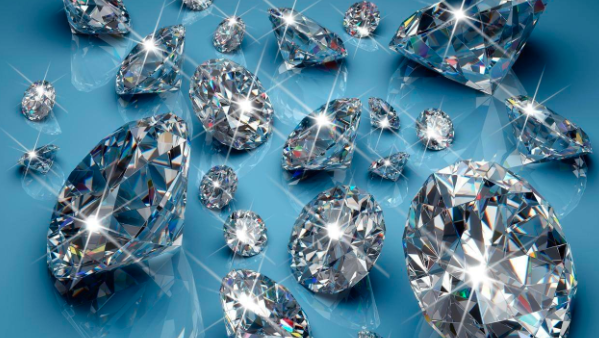Laboratory Cultivation Diamond Market and Industry Trends
The rise of laboratory-grown diamonds in the U.S. market has been unstoppable. The U.S. accounts for 80% of the world’s cultivated diamond market, a statistic that demonstrates its dominance in this field. In recent years, as technology continues to advance, cultivated diamonds are virtually indistinguishable from natural diamonds in terms of quality, and comparable to natural diamonds in terms of crystal structure integrity, transparency, refractive index, and color dispersion. This has led more and more U.S. consumers to turn their attention to lab-grown diamonds.

Leading jewelry brands have also joined the cultivated diamond track. Swarovski launched its cultivated diamond brand Diama in 2017, diamond leader De Beers launched its lab diamond brand Lightbox Jewelry in 2018, and jewelry brand Pandora announced the full adoption of cultivated diamonds in the production of its new line of products in 2021. The addition of these brands has played a positive role in the promotion of cultivated diamonds in the U.S. market.
As more and more consumers recognize the cost-effective and environmentally friendly advantages of cultivated diamonds, their future development prospects in the U.S. market are very promising. It is expected that with the further optimization of cultivation technology and the changing consumer attitudes of Millennials and Generation Z, the share of cultivated diamonds in the U.S. market will continue to expand.
What Are Lab-Grown Diamonds?
Lab-grown diamonds, also known as synthetic or cultured diamonds, are created in controlled laboratory environments. These diamonds replicate the natural growth process, offering identical physical, chemical, and optical properties. Unlike natural diamonds, lab-grown diamonds are a sustainable and ethical alternative.

Why Choose Lab-Grown Diamonds?
1. Ethical Sourcing
Lab-grown diamonds eliminate concerns about unethical mining practices. They are conflict-free, ensuring that no harm is caused to workers or communities.
2. Sustainable Brilliance
Lab-grown diamonds are an eco-friendly choice. Their production minimizes environmental impact compared to traditional mining, reducing land degradation and water pollution.
3. Unmatched Affordability
Lab-grown diamonds are significantly more affordable than natural ones. With savings of up to 40%, they provide exceptional value without compromising quality or brilliance.
How Are Lab-Grown Diamonds Made?
1. High-Pressure High-Temperature (HPHT) Method
The HPHT process mimics the Earth’s natural conditions. A diamond seed is placed under extreme pressure and temperature, producing a stunning diamond in weeks.
2. Chemical Vapor Deposition (CVD) Method
The CVD method involves placing a diamond seed in a chamber filled with carbon-rich gases. Heat transforms the gases into plasma, allowing carbon atoms to crystallize and form a diamond layer by layer.
Lab-Grown vs. Natural Diamonds: Key Differences
1. Origin
Natural diamonds are mined from the Earth, while lab-grown diamonds are created in a lab setting.
2. Price
Lab-grown diamonds cost less due to their efficient production methods.
3. Environmental Impact
Lab-grown diamonds have a smaller carbon footprint, making them a greener alternative.
Debunking Myths About Lab-Grown Diamonds
1. Are They Real Diamonds?
Yes! Lab-grown diamonds are 100% real diamonds. They possess the same sparkle, hardness, and durability as mined diamonds.
2. Do They Last Forever?
Absolutely. Lab-grown diamonds, like natural ones, are enduring and timeless.
The Future of Jewelry
As sustainability takes center stage, lab-grown diamonds are revolutionizing the jewelry industry. They align with modern values of ethical consumption, offering brilliance and beauty without compromise.
Conclusion
Lab-grown diamonds are the ultimate alternative to natural diamonds, blending ethical practices, sustainability, and affordability. Choosing them ensures a stunning piece of jewelry while contributing to a better future.

